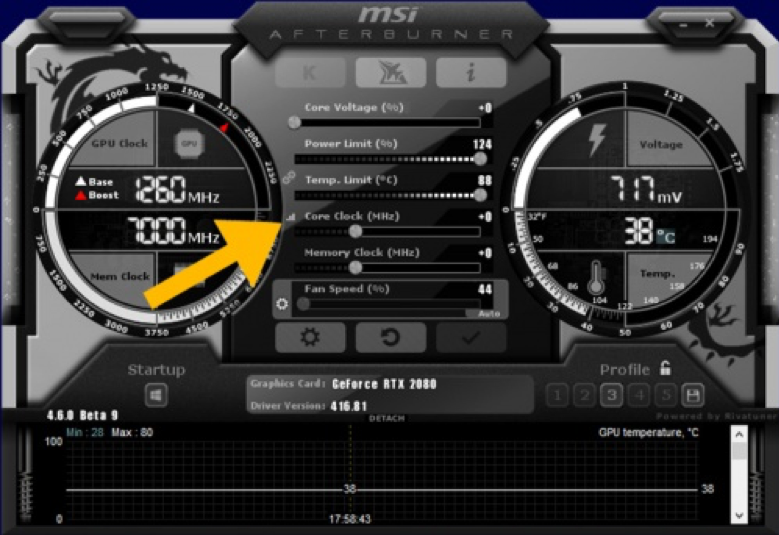

Theres another tool that look 1:1 like wattman but I forget what its called. Personally, I would prefer a Tray Icon so I can keep the app minimized without it taking up a taskbar slot, but YAY! Another GUI based GPU OC utility with GPU fan curve capabilities! AMD support is in the works, so if you know how to help, contribute! The dev in their wisdom put help hints in a KDE Breeze theme only feature of “What’s this?” I didn’t figure this out until madly clicking the graph like crazy. Setting a custom fan curve requires DOUBLE CLICKING the graph to set plot points. Run qmake rojekti.pro and then make.Īfter making, you can optionally install this into /opt/tuxclocker/bin with sudo make install A fix for example is ln -s -r -f libGL.so.1.0.0 libGL.so in /usr/lib/x86_64-linux-gnuĬlone from Git or download a release source package and extract. Once Afterburner is installed, open it, go to Settings by clicking the cog icon and check the ‘Unlock voltage control’ and ‘Unlock voltage monitoring’ boxes. NVIDIA drivers combined with a Mesa PPA tend to mess this symlink up. You also need the rest of the QT5 dev packages (KDE frameworks tend to install this automatically, especially if you already have KSysGuard)ĭouble check your libGL.so symlink. Prerequisites include libxnvctrl-dev, qt5-default and libqt5x11extras5-dev, so be sure to have that first. The page needs to be updated, but since that has not happened for quite some time, it is unlikely that it is going to happen anytime soon.TuxClocker: A QT based Linux GPU OC utility GPU You find the download link but when you load it manually, you get a file not found error.

You can verify that by checking the source of the page and searching for "zip". Technically speaking, MSI is linking to a ZIP file that no longer exists on the linked page.

I tried it in different browsers and even on different systems, and the result was always disappointing. There is a download link, but clicking on it does nothing. If you have been to the MSI Afterburner website lately, you may have noticed that you cannot download the program anymore. While many MSI Afterburner users use the software to get more out of their video cards, I liked its ability to create fan profiles to reduce the noise emitted by the video card's fans. Further, navigate to the Fan tab and toggle the Enable user-defined software automatic fan control on. My first review of MSI Afterburner dates back to 2010, followed by a tutorial in 2011 on recording game video using the software. To adjust the fan curve, click on the gear icon to open Settings.


 0 kommentar(er)
0 kommentar(er)
